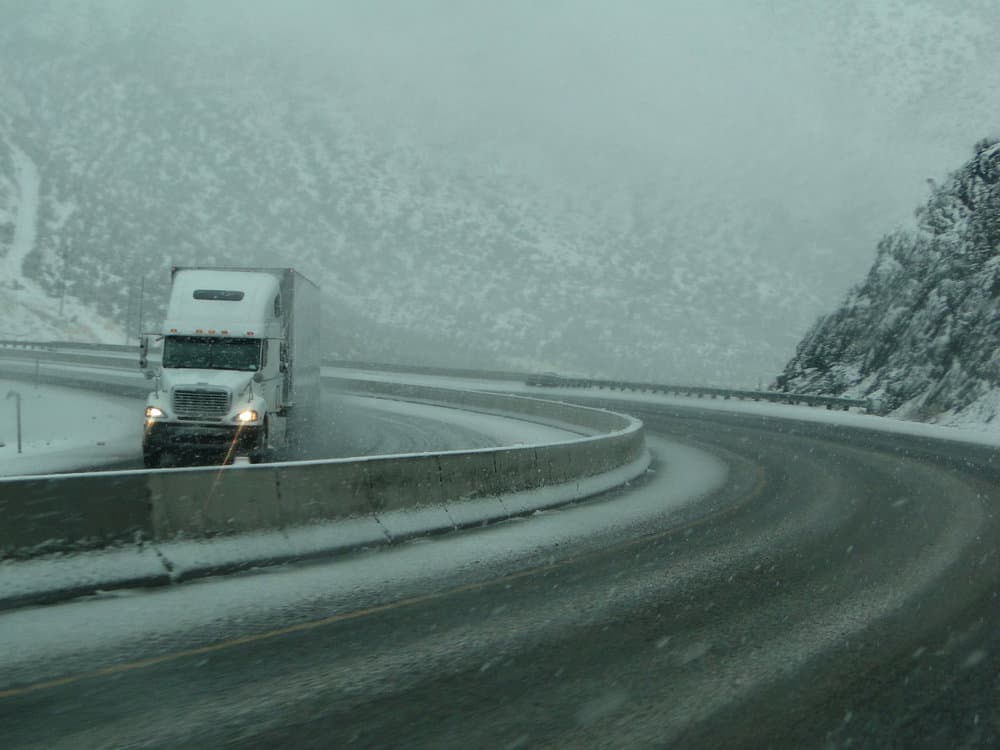
Cancellations, rebooking of freight could cause short-term capacity crunch throughout region
While many in the Northeast are used to road closures due to severe weather, there is another, often unknown impact of severe weather like the region is feeling today with Winter Storm Stella. With the blizzard forecast to drop up to 2 feet of snow across the region with wind gusts up to 50 mph, most Northeast states have implemented travel restrictions if not outright bans for vehicles, including commercial trucks.
Share:
Those bans have put the supply chain at risk, and could have an economic impact of up to $100 million a day or more. The Nor’easter is expected to impact travel for Tuesday and Wednesday.
“The combination of heavy snow over a large area, prodigious snowfall rates, storm intensity, extremely strong winds, and severe coastal impacts will make this one of the top 3 impact storms this decade in the Northeast,” Jon Davis, meteorology team lead for Riskpulse, told FreightWaves. “The swath of most severe storm impacts will blanket the heaviest population corridor in the nation as approximately 50 million people will be directly impacted by blizzard conditions.”
Riskpulse’s product lineup is used by decision-makers in logistics industries to predict weather impacts up to 40 days in advance to avoid disruptions to the supply chain.
“On the logistics side, this storm will result in a logistics halt in the Northeast quadrant of the U.S. for a two- to three-day period – a rare occurrence.”
“On the logistics side, this storm will result in a logistics halt in the Northeast quadrant of the U.S. for a two- to three-day period – a rare occurrence. Hence, the weather the next few days will have severe impacts on people and commerce,” Davis adds, noting that users of the company’s Sunrise tool were able to make adjustments up to six days ago. “Riskpulse’s Sunrise tool began to alert its logistics customers for the probability of serious storm risks on specific assets and lanes five to six days in advance of the first snowflakes. In the end, it is an integration of specific meteorological data into the logistic framework that will first determine and then help to mitigate risk.”
Steve Bennett, COO of Riskpulse, put some specific data beyond Davis’ impact assessment by using examples from the company’s beverage and food user community:
- At the height of the storm, a large beer distributor has nearly 800,000 miles of their shipping network at “high risk” of shipment delays. Over 800 individual shipments are impacted across three days.
- Over 10% of a U.S. diary’s shipping routes are at high risk of disruption on Tuesday.
- Nearly 50% of a Northeast grocery wholesaler’s customer locations and distribution centers are at high risk of disruption both Tuesday and Wednesday.
According to Riskpulse, the impact from a weather disturbance is real. That impact also affects more than just shipment delays, according to Mark Montague, DAT industry analyst.
“The impact of this extreme weather is felt in different ways; road conditions are unsafe, so trucks don’t move and businesses are closed,” Montague says. “Sometimes the bad weather keeps freight from leaving the origin market. But storms can also shut off access to major destinations—those big population centers along the East Coast and in the Midwest.
“The trucks that do manage to deliver their cargo may not be able to get home again. If you own a home improvement store in New Jersey, you don’t want to be out of stock on snow blowers right now, so you’re willing to pay a premium for that truck,” he adds. “That rate goes up. But there is not much freight available to load up that van for the return trip, and the trucker doesn’t want to drive empty. That rate goes down. The inbound rate was higher than the outbound rate to begin with, so the round-trip rate may go up. Add up all those round trips, all over the country, and the average rate for vans rises.”










